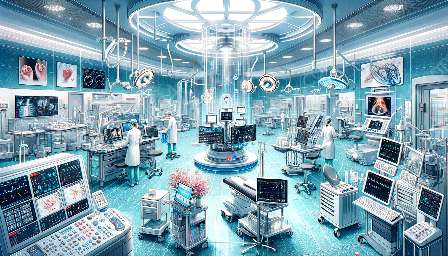Homeostasis is a fundamental concept in anatomy and physiology, encompassing the body's ability to maintain internal balance and stability. It plays a vital role in the overall health and functioning of the human body. This topic cluster will delve into the intricacies of homeostasis, its relevance to medical devices, and its impact on human health in a real and engaging manner. By exploring the mechanisms and significance of homeostasis, we can gain a deeper understanding of how the body maintains its equilibrium.
The Basics of Homeostasis
At its core, homeostasis refers to the body's ability to regulate its internal environment, ensuring that conditions remain within a narrow range that is conducive to optimal functioning. This includes the balance of various factors such as temperature, pH levels, blood sugar, and electrolyte concentrations. Homeostasis is essential for the proper functioning of cells, tissues, and organs, as it provides a stable internal environment that supports physiological processes.
The mechanisms of homeostasis are maintained through intricate feedback systems that continuously monitor and adjust various physiological parameters. These feedback systems involve sensors, control centers, and effectors, working together to detect deviations from the body's ideal state and initiate appropriate responses to restore balance. For example, when body temperature rises, the body activates mechanisms to cool down, such as through sweating and increased blood flow to the skin.
The Role of Homeostasis in Anatomy and Physiology
Homeostasis is deeply intertwined with the study of human anatomy and physiology, as it underpins the understanding of how the body's systems work together to maintain internal stability. Across different organ systems, homeostatic mechanisms are at play to regulate functions and ensure optimal conditions for cellular activities. For instance, the endocrine system maintains homeostasis by controlling hormone levels, while the respiratory system regulates the levels of oxygen and carbon dioxide in the blood.
When studying anatomy and physiology, a thorough grasp of homeostasis is crucial for understanding the interplay of various bodily functions and the significance of maintaining equilibrium within the body. Whether it's the regulation of blood pressure, pH balance, or fluid volume, homeostasis is an underlying principle that influences every aspect of human biology.
Homeostasis and Medical Devices
With advancements in medical technology, the concept of homeostasis has also become relevant in the development of medical devices that aid in monitoring and maintaining physiological balance. Medical devices such as continuous glucose monitors, ventilators, and cardiac monitors are designed to assist in regulating specific parameters within the body to support homeostasis.
For instance, continuous glucose monitors are instrumental in helping individuals with diabetes maintain optimal blood sugar levels by providing real-time data and alerts for necessary interventions. Ventilators support respiratory homeostasis by aiding individuals with compromised lung function to maintain appropriate oxygen and carbon dioxide levels in their blood. These examples highlight how medical devices are intricately linked to the principles of homeostasis, as they aim to support the body's natural regulatory mechanisms.
Homeostasis and Human Health
Understanding homeostasis is crucial for assessing and promoting human health. When homeostatic mechanisms are disrupted, it can lead to various health conditions and diseases. For instance, diabetes results from a lack of homeostatic control over blood glucose levels, while hypertension reflects an imbalance in blood pressure regulation.
Furthermore, homeostatic imbalances can impact the overall well-being of an individual, affecting vital processes such as metabolism, immune function, and organ function. By recognizing the significance of homeostasis in maintaining health, healthcare professionals can intervene to restore balance and alleviate the effects of homeostatic disruptions through targeted treatments and lifestyle modifications.
Conclusion
Homeostasis is a captivating and essential concept in the fields of anatomy, physiology, and medical devices. It forms the foundation for understanding how the human body maintains internal balance and stability, influencing various aspects of health and well-being. By comprehensively exploring the intricacies of homeostasis, we can appreciate its profound impact on human biology and the advancements in medical technology aimed at supporting physiological equilibrium. Embracing the concept of homeostasis allows us to recognize the remarkable adaptive mechanisms at play within the human body, fostering a deeper understanding of our physiological intricacies and the importance of maintaining balance for overall health and vitality.


